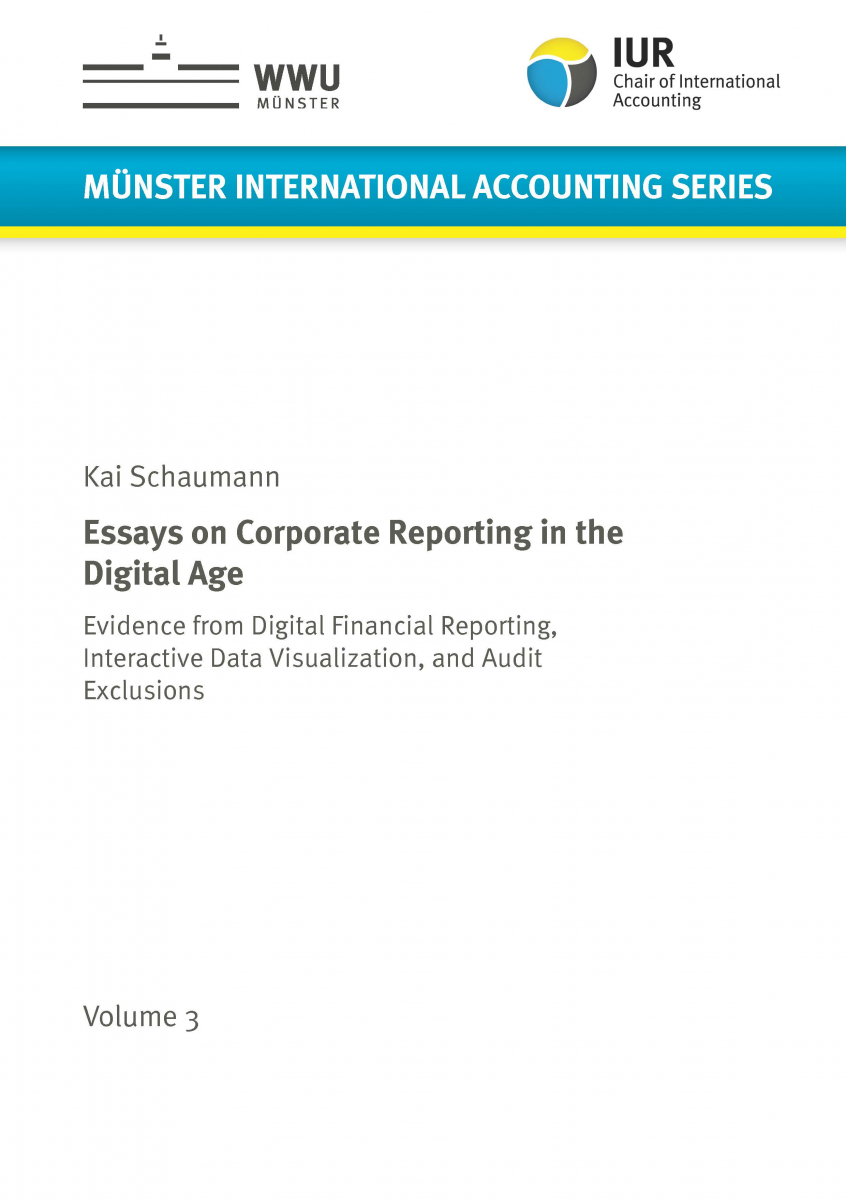Volume 3 – Kai Schaumann
Essays on Corporate Reporting in the Digital Age
Evidence from Digital Financial Reporting, Interactive Data Visualization, and Audit Exclusions

The information technology of the digital age has changed corporate reporting. Digital reporting formats supplement, if not even partially replace, traditional print reports. Furthermore, the information technology of the digital age simplifies access to corporate information and increases the need of capital providers for information that goes beyond traditional annual financial statements. Companies respond to these information needs with extended external reporting in both digital and traditional reporting formats. In this context, this thesis analyzes investor reactions to three individual developments: digital financial reporting (study 1), interactive data visualization (study 2), and audit exclusions (study 3).
The first study (“Market Reactions to the Harmonization of Digital Financial Reporting in Europe – the Role of Pre-Adoption Experience in XBRL”), deals with the further development of digital financial reporting in Europe. It analyzes investor reactions to the development of a European Single Electronic Format (ESEF), which became mandatory for more than 5,000 European companies on January 1, 2020. The study finds an expected improvement in financial reporting quality for companies with previous experience in digital reporting.
The second study (“The Effects of Interactive Data Visualization on Effort and Accuracy in Financial Forecasting”) deals with the question to what extent the application of interactive data visualization influences investors’ decision-making behavior. Data from a lab experiment shows that investors using dashboards spend less time on their financial forecasts and forecast less accurately than users of static formats. Further mediation analysis attributes the results to an increase in self-confidence among investors.
The third study (“How to Communicate an Exclusion from the Statutory Audit of Narrative Reports?”) analyzes the provision of voluntary narrative disclosures in the management report. Using eye-tracking technology, the study examines how to successfully communicate that some pieces of information in the management report have not been audited. It concludes that investors can better distinguish between audited and unaudited information if both types of information are visually identified. The model suggested by the German Institute of Auditors (Institut der Wirtschaftsprüfer) of listing the unaudited parts in an appendix to the auditor's report has no comparable effect.
Taken together, the three studies provide information on how certain developments of corporate reporting in the digital age influence the information processing of individual groups of investors. Thereby, this thesis provides insights that may help corporate reporting to maintain its critical role in companies’ capital market communication.


